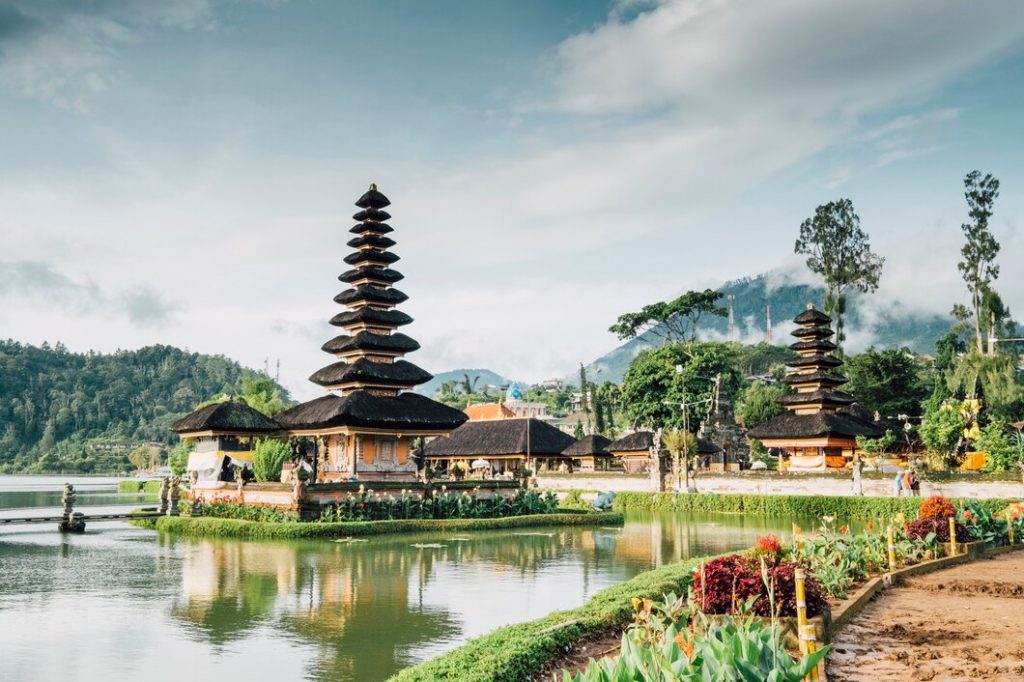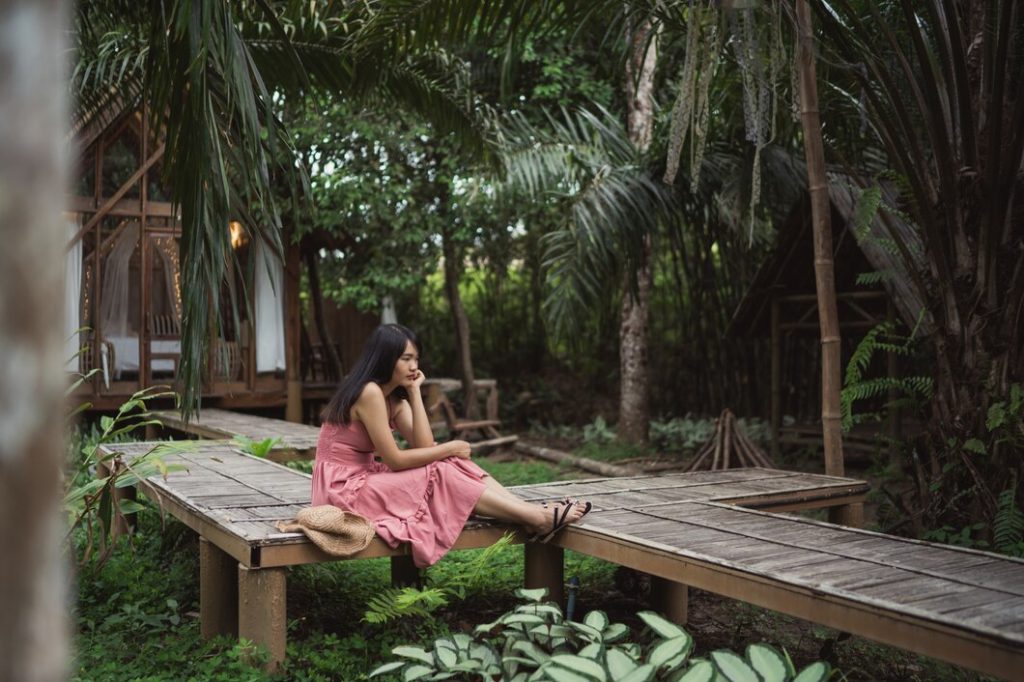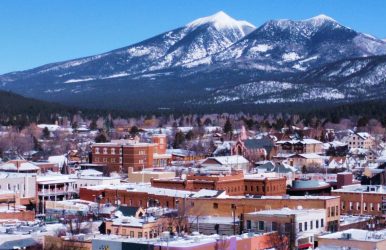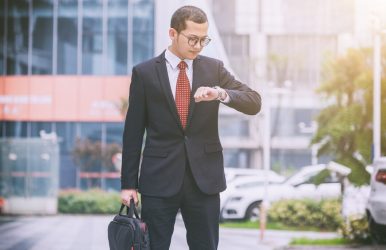The Best Luxury Villas Greece Le Collectionist: Why Are They Unique? (And How They Fit Into Greece’s Luxury Tourism Scenario?)
BY Sibashree Jul 21, 2025
With Kylie Jenner spending her holidays in Kefalonia and Cristiano Ronaldo raising the mercury with his cruise holidays in the Aegean region, Greece once again shows why it is a favorite luxury destination of celebrities and high-end travelers. Furthermore, Greece has maintained its position as a premium travel destination despite stiff competition from countries such as Italy and Spain. Additionally, as Italy and Spain struggle with overtourism, Greece is protecting its luxury tourism landscape with a sustainable approach. Corfu, a Greek Island and a jewel in the luxury tourism scene, is setting the standard in how to do it right. Additionally, it highlights why “high-quality development” involves building and enhancing luxury lodging options. However, luxury lodging options, such as the luxury villas Greece Le Collectionist, have always been important for luxury tourism or premium travel experiences in the country. These villas attract high-spending visitors with better comfort, privacy, and amenities. Moreover, they are crucial for the continued success of the tourism sector through economic boost and adherence to sustainable practices. In this Tour and Travel Guide, we will do a case study on the luxury villas Greece Le Collectionist, and find out how they are contributing to premium tourism in the country and why they are unique. Why Are Luxury Villas Greece Le Collectionist Unique? Making Your Holidays Unforgettable View this post on Instagram A post shared by Le Collectionist (@lecollectionist) Like the luxury villas Italy Le Collectionist, and luxury villas Ibiza Le Collectionist, the villas in Greece also offer the signature amenities, such as organizing tailor-made holidays, exceptional services, and an on-site team that ensures everything is in order. Nevertheless, during your stay at the luxury villas Greece Le Collectionist, you will have the following unique experiences. 1. Luxurious Holiday In Greece: Exploring A Different Side Of The Country The cradle of Western civilization, Greece, has cemented its position among high-net-worth travelers with its cultural richness and matchless scenic beauty. You can visit Athens, the Pantheon, or the Acropolis. You can also explore the Greek Islands, the hidden gems in the luxury tourism scene of the country. Whatever your choice is, the luxury villas Greece Le Collectionist will only add to your adventure and experience with exclusive services. 2. Soaking In The Quiet Beauty Of The Greek Islands I have already mentioned Corfu and how it is setting an example of sustainable tourism in Greece. The metamorphosis of Corfu tourism is different as it does not implement restrictions on tourism taxes like many other European countries. Also, the island administration does not want mass tourism to be the basis of the economy on this island. However, the island wants to offer a sophisticated experience and follow a “quality over quantity” approach for the progress of tourism and economy on the island. Do you know that Le Collectionist has villas in Corfu? However, along with the villas in Corfu, other Le Collectionist accommodations in different Greek islands will allow you to spot pelicans in bohemian Mykonos, explore the rugged landscapes of Paros, and listen to the murmurs of the Ionian Sea. 3. The Mediterranean Sea, Sunset, And The Luxury Villas: A Romantic Saga The beautiful Le Collectionist villas in Greece look like an extension of the signature Greek Island homes. Yet, they stand out thanks to their unique architecture and charm. So, relax on the patio of these luxury villas, sip on your favorite cocktail, and watch the Sun go down into the Mediterranean Sea. How To Reach The Luxury Villas Greece Le Collectionist? View this post on Instagram A post shared by Le Collectionist (@lecollectionist) Greece has the Athens Airport, and it is connected to other parts of the world by air. However, Greece also has dedicated airports serving popular Greek islands such as Santorini and Mykonos. Are you planning to stay in the Le Collectionist luxury villas in the Cyclades islands? You can take a boat from the port of Piraeus to reach these islands. What Is The Best Time To Stay At The Luxury Villas Greece Le Collectionist? View this post on Instagram A post shared by Le Collectionist (@lecollectionist) April to Early May is the best time to stay at the luxury villas Greece Le Collectionist. Especially, the Cycladic Islands get bathed in warm sunlight in these months, and the summer crowd is still manageable. Further, June to September or the summer season is the busiest in the Le Collectionist luxury villas of Greece. If you are planning a visit in the summer months, you must choose a villa with a private swimming pool for the perfect summer escape. Moreover, September to October or early Autumn is another ideal season for a trip to Greece and vacationing in the luxury villas. Milder weather conditions and fewer crowds make these months more enjoyable. Best Luxury Villas Greece Le Collectionist: Choose The One Where You Want To Stay View this post on Instagram A post shared by Le Collectionist (@lecollectionist) The best Le Collectionist luxury villas in Greece are divided into different categories so that you can choose one based on your preference. These categories are: 1. Beachfront villas in Greece, 2. A traditional Cycladic house, 3. Greek family holidays and 4. Luxury Greek villas with private pools. 1. Beachfront Villas In Greece These are the top beachfront villas in Greece by Le Collectionist. A. Villa Nausica Tariff for 7 Nights: $70,890 Area: 500 Square Meters Bedrooms and Bathrooms: 7 Suitable for: 14 Guests Check-In: 5 PM Check-Out: 10 AM Villa Nausica is located inside the nature reserve of the island of Corfu. It is a perfect choice to enjoy the gorgeous Mediterranean summer. It promises the best start to your day as you have breakfast under the pergola during a kayak ride. Villa Nausica Key Features Swimming Pool with Heated Water Proximity to Golf Course and Beach Private Walkway to the Beach Sea View B. Renaya Estate Tariff for 7 Nights: $98,730 Area: 400 Square Meters Bedrooms and Bathrooms: 10 Suitable for: 20 Guests Check-In: 5 PM Check-Out: 10 AM Spending days on the hills of Zakynthos! The Renaya Estate helps you to realize this dream of yours. The large glass doors and the sunlight coming through them always maintain a sunny ambiance in the villa. Further, you can walk to the nearby coves, trails, and a fishing port from this villa. Also, the afternoon strolls through the local villages and having your dinner under the pergola are the most refreshing experiences here. Enjoy the experience with the scent of lemon trees filling the air. Renaya Estate Key Features Partial Airconditioning Fireplace Barbecue Nature Reserve C. Villa Dwell Tariff for 7 Nights: $49,715 Area: 450 Square Meters Bedrooms and Bathrooms: 8 Bedrooms and 7 Bathrooms Suitable for: 16 Guests Check-In: 5 PM Check-Out: 12 PM Villa Dwell allows you to slow down and relax. From breakfast by the pool to snorkeling in the water on the edge of the villa’s garden, this villa is an ideal choice for people who want to enjoy a kalí zoí or a good time. Further, you can take a ride in a kayak or paddleboard in the turquoise water and have your romantic moments at the Belvedere tower. From the top of the tower, you will enjoy a panoramic view. Then, you can end your day with an alfresco dinner under the stars. The smell of the sea, lavender, and wildflowers will rejuvenate your mind. Moreover, if you want to experience how Greece celebrates the farm-to-table culture, this villa is the ideal choice. It has a chicken coop nearby and its own herbs and vineyard gardens. Villa Dwell Key Features Partial Air Conditioning Fireplace Wooded Garden Stunning Sea View Private Walkway to the Beach 2. A Traditional Cycladic House Here are our top picks among traditional Cycladic houses in Greece. A. Villa Adriane Tariff for 7 Nights: $62,145 Area: 450 Square Meters Bedrooms and Bathrooms: 6 Bedrooms and 7 Bathrooms Suitable for: 12 Guests Check-In: 5 PM Check-Out: 10 AM In the fields of Elia, Villa Adriane maintains its distinct appearance with its modern architecture. Just beyond the villa, you will find the turquoise water of the Aegean Sea. Furthermore, the barbecue delicacies and the beautiful sunset are the main attractions at this luxury villa. Villa Adriane Key Features Fitness Room Infinity Swimming Pool Jacuzzi Sea View Air Conditioning B. Villa Jondal Tariff for 7 Nights: $106,040 Area: 1275 Square Meters Bedrooms and Bathrooms: 9 Bedrooms and 17 Bathrooms Suitable for: 18 Guests Check-In: 5 PM Check-Out: 10 AM Villa Jondal sits pretty on the shoreline of the Fokos beach. Loukas Bobotis, a renowned architect, is responsible for the construction of this villa. The villa has a movie room, and you will love the coastal surroundings here. Villa Jondal Key Features Infinity Pool Private Pathway to Beach Partial Air Conditioning Proximity to Beach C. Villa Kenzie Tariff for 7 Nights: $106,855 Area: 910 Square Meters Bedrooms and Bathrooms: 9 Bedrooms and Bathrooms Suitable for: 18 Guests Check-In: 5 PM Check-Out: 10 AM Close to the Kalo Livadi, Villa Kenzie offers the most stunning views of the Aegean Sea. Further, the villa celebrates the lively atmosphere of Mykonos. Also, you will love exploring the nearby wild coves. Villa Kenzie Key Features Fitness Room Panoramic View of the Sea Air Conditioning Outdoor Swimming Pool 3. Greek Family Holidays Are you traveling to Greece with your family? You can choose any of these Le Collectionist luxury villas. A. Villa Mulberry Tariff for 7 Nights: $24,860 Area: 450 Square Meters Bedrooms and Bathrooms: 6 Bedrooms and 5 Bathrooms Suitable for: 12 Guests Check-In: 5 PM Check-Out: 10 AM In the island of Tinos, Villa Mulberry stands out with its sleek architecture. Further, it offers the perfect fusion of sophistication and simplicity. You can enjoy a 15-minute drive to the Town Center or take a walk for 10 minutes to the beach. Villa Mulberry Key Features Overflowing Swimming Pool Jacuzzi Barbecue Grill Airconditioning B. Villa Charis Tariff for 7 Nights: $38,010 Area: 500 Square Meters Bedrooms and Bathrooms: 10 Bedrooms and Bathrooms Suitable for: 20 Guests Check-In: 5 PM Check-Out: 10 AM Located on the island of Antiparos, Villa Charis has a refined architecture that looks brilliant against a lush green backdrop. The Mediterranean Garden and the terrace are the special attractions in this villa. Villa Charis Key Features Four Sunbeds Outdoor Shower Infinity Pool C. Villa Clea Tariff for 7 Nights: $17,230 Area: 345 Square Meters Bedrooms and Bathrooms: 5 Bedrooms and Bathrooms Suitable for: 10 Guests Check-In: 5 PM Check-Out: 10 AM Close to the Paros beaches, Villa Clea welcomes you to the ultimate Cycladic experience. It's ideal for a stay with friends or family. Villa Clea Key Features Barbecue Fireplace Outdoor Swimming Pool 4. Luxury Greek Villas With Private Pools On the warmest summer days, a luxury villa with private pools will be the ideal choice. Choose any of the following. A. Villa Hestia Tariff for 7 Nights: $15,380 Area: 360 Square Meters Bedrooms and Bathrooms: 6 Bedrooms and 8 Bathrooms Suitable for: 12 Guests Check-In: 5 PM Check-Out: 10 AM Meant for the ultimate Mykonos experience, Villa Hestia offers breathtaking views of the Aegean Sea. Furthermore, it is a peaceful haven close to the serene beaches and the palpable energy of Mykonos Town. Waking up to the sound of waves is bliss here. Villa Hestia Key Features Hammam Airconditioning Infinity Pool Mediterranean Garden B. Villa Adonia Tariff for 7 Nights: $39,545 Area: 600 Square Meters Bedrooms and Bathrooms: 5 Bedrooms and Bathrooms Suitable for: 10 Guests Check-In: 5 PM Check-Out: 10 AM Villa Adonia is another accommodation you can choose if Mykonos is on your mind. The Aegean Sea is a few steps from here. From here, you can also explore Aghios Sostis and the secret coves. Villa Adonia Key Features Barbecue Infinity Pool Fireplace Airconditioning Sea View C. Villa Jodie Tariff for 7 Nights: $99,610 Area: 2500 Square Meters Bedrooms and Bathrooms: 17 Bedrooms and 20 Bathrooms Suitable for: 34 Guests Check-In: 5 PM Check-Out: 10 AM Located at the top of Kalo Livadi Bay, Villa Jodie is ideal for a tranquil vacation with the most luxurious amenities. Unwind under the pergola or watch the stars from the terrace! Villa Jodie Key Features Jacuzzi Hammam Elevator Fitness Room Helipad How To Book Luxury Villas Greece Le Collectionist? You can book any of the luxury villas Greece Le Collectionist, by calling +33173030202. They are available from Monday to Saturday from 1 PM to 10 PM in local time. Furthermore, online booking facilities are available for many villas, and you can do the same from the official website. 1. First, choose the location and select the kind of villa you want. 2. Then, choose a villa based on your budget and preference, and on the right side, you will find the pricing details. There will also be two options, “Make a Request” and “Reserve.” 3. If you click on the Make a Request Button, you will get a form where you will have to fill in your name, email ID, and phone number so that Le Collectionisy can get back to you. 4. However, when you click on the “Reserve” button, you will be redirected to the booking confirmation page with a mention of the advance amount to be paid. 5. Click on the “Continue” button and log in using your email ID and the OTP sent to your email ID. 6. Finally, fill in your card details and make the payment. Are Luxury Villas Greece Le Collectionist Worth It? Hear From People Who Stayed Here View this post on Instagram A post shared by Le Collectionist (@lecollectionist) Yes, luxury villas Greece Le Collectionist promise to make your Greek holidays magical. Condé Nast Traveler has been awarding Le Collectionist since 2014, and in 2024, it received the B Corp label award for its responsible practices. Let’s hear it from the people who had a wonderful stay at the Le Collectionist luxury villas in Greece. Angelos P. writes in August 2024, “Villa Hestia was beautiful. The pictures were not deceiving, and it was even better in real to be there. The place is spacious, well appointed, and located in a very peaceful place in Mykonos. What a luxury to have your own bathroom in every room. It had been years since I felt so at peace in a holiday. I highly recommend it. We all loved it and we will definitely go back. In fact, we still talk about it and how amazing it was to just be there.” Skye H. calls the Villa Adonia, “Wonderful House.” Cynthia writes on Trustpilot, “Amazing experience. The villa was exactly how the photo showed & was very well kept. My Le Collectionist advisor was very helpful & responsive. Overall great experience & will work with Le Collectionist again.” Overall, Le Collectionist has a 4.5 rating out of 5 on Trustpilot. Luxury Villas Greece Le Collectionist Frequently Asked Questions (FAQs) Here are the frequently asked questions and answers about luxury villas Greece Le Collectionist. 1. How Can I Pay For My Stay? Once you sign the contract, you will be required to pay a specified amount within three business days. After that, you need to pay the remaining amount at least two months before your rental period starts. 2. Will I Get A Refund If I Cancel The Booking? If you are cancelling your booking at least 60 days before your booking, you will get a 50% refund. However, after that, the full booking amount will be charged as the cancellation fee. Having said that, if you are making online bookings, you are eligible for a 100% refund until the reservation is confirmed. 3. Can I Check In Early Or Check Out Late? For most Le Collectionist properties, the check-in time is 5 PM and the checkout time is 10 AM. The provisions for late check-ins and checkouts depend on the property owners and the availability of rooms. Also, you have to inform the property owner earlier so that proper arrangements can be made. 4. Do I Need To Pay A Security Deposit For A Stay In Luxury Villas Greece Le Collectionist? Yes, you will have to pay a security deposit, as mentioned in your rental contract. However, no amount is withheld unless any damage occurs and without proper inspections.














